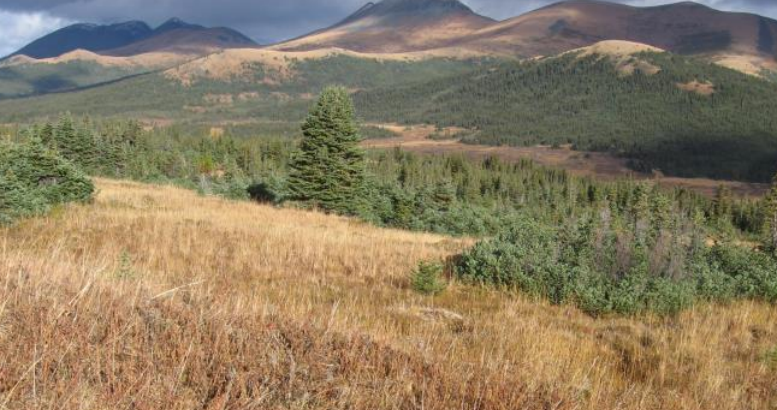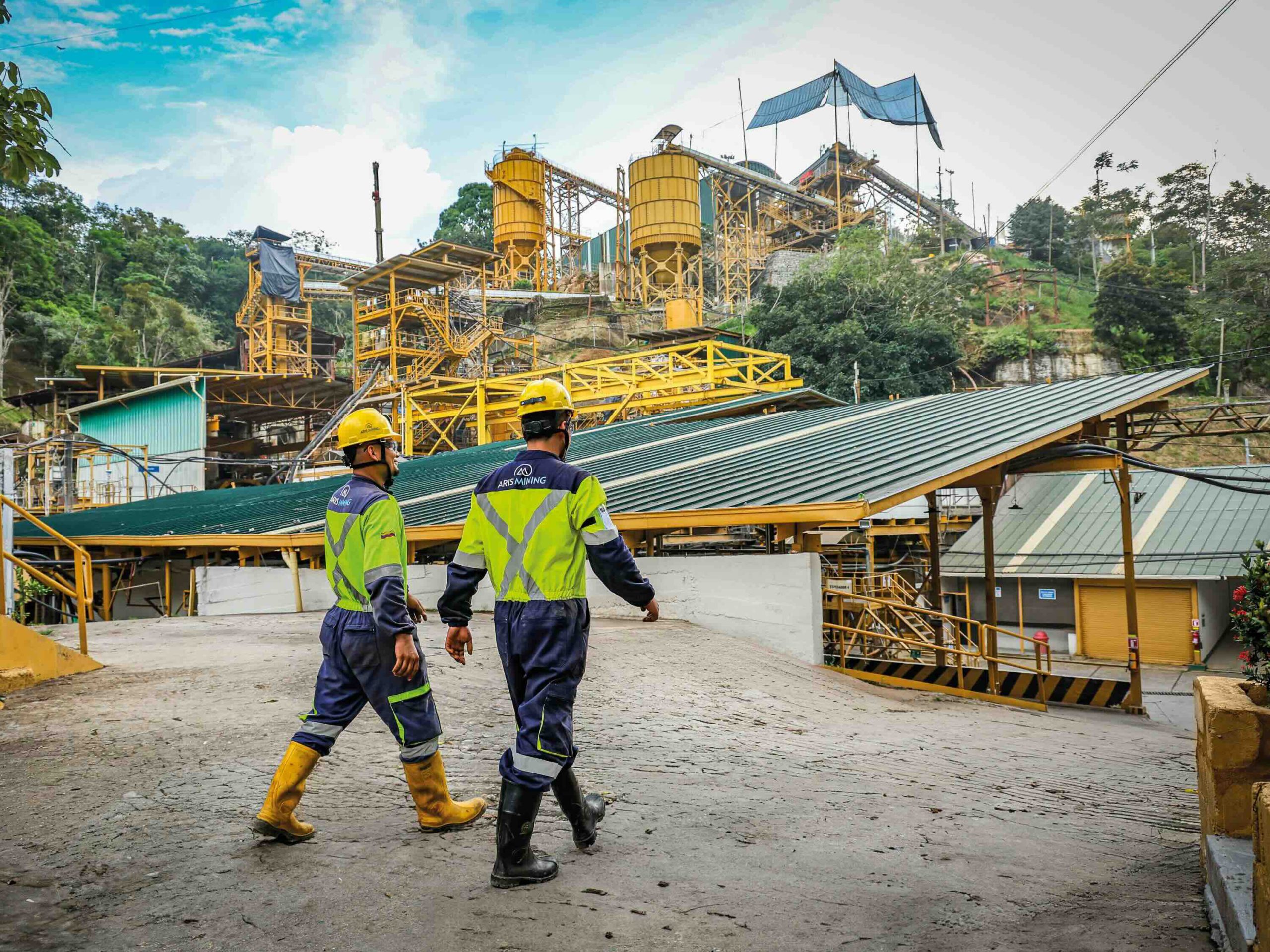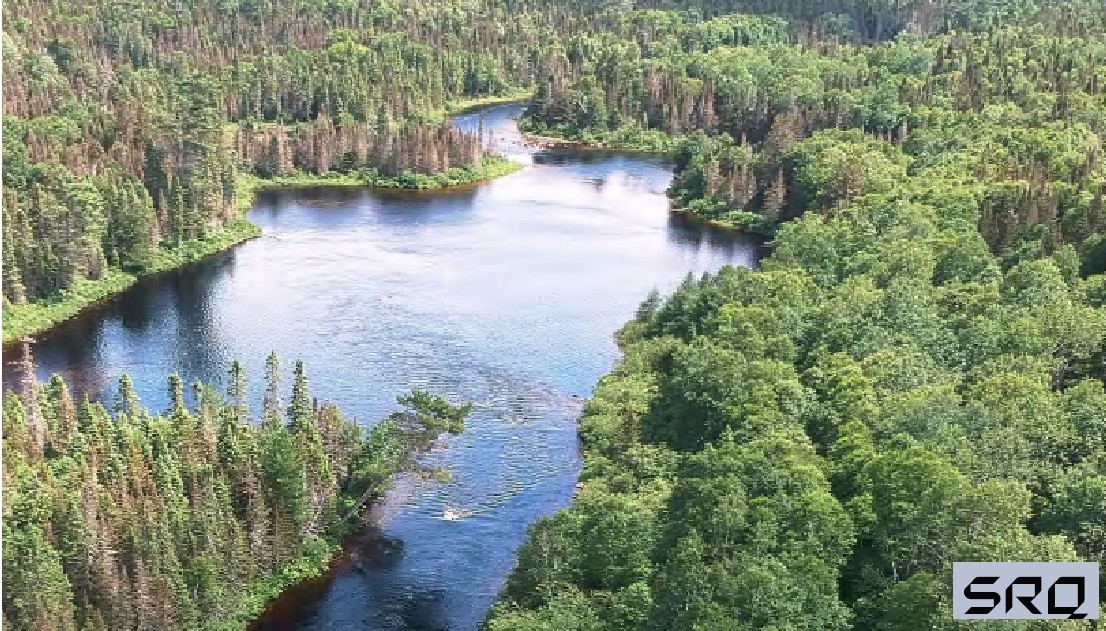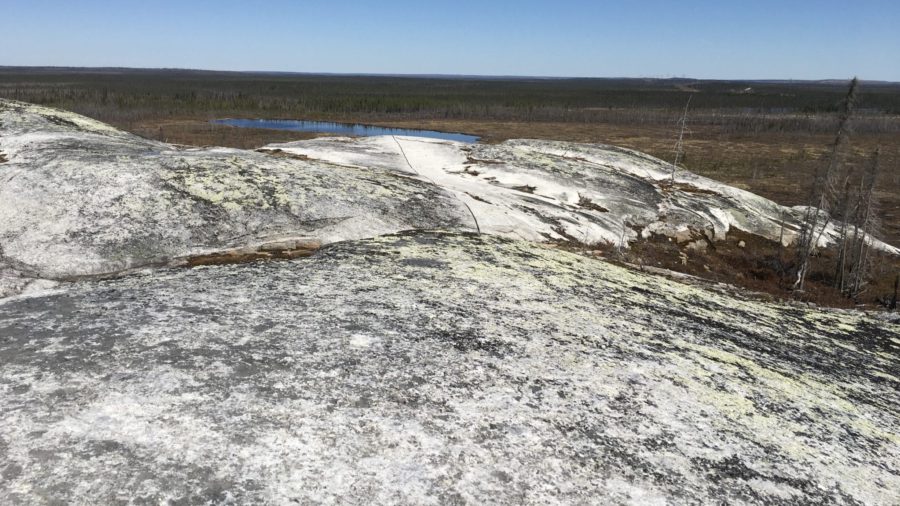[caption id="attachment_1003718967" align="alignnone" width="550"]

The Kutcho copper-zinc-gold-silver project, 330 kms north of Smithers. B.C. Credit: JDS Energy & Mining.[/caption]
Desert Star Resources believes it can offer investors unique exposure to copper production via near-term development of the Kutcho volcanogenic massive sulfide project, 100 km due east of Dease Lake, British Columbia.
On June 15, the company outlined a deal with
Capstone Mining that enables it to acquire the project for $28.8 million in cash, and shares equal to 9.9% of its post-deal equity.
Desert Star simultaneously released an updated pre-feasibility study (PFS) on the project, which was led by
JDS Energy & Mining. The company intends to fast track a feasibility study (FS) by second-quarter 2018, and hopes to have its permits in hand by the end of 2019.
“We’ve been talking to different groups in the financial community, and one thing we’re hearing is that there aren’t really any good mid-tier copper producers out there. There’s effectively a big gap in that segment of the space right now,” elaborates Desert Star president and CEO Vince Sorace during an interview.
“So Kutcho probably isn’t big enough to be attractive to a large-scale copper company, but it can certainly fill a niche in the market,” he adds.
The project has seen over $50 million in historical expenditures, which underpin the updated PFS.
Desert Star COO Rob Duncan explains that his team built upon work Capstone completed in 2010, but incorporated “detailed re-costing on capital and operating expenditures,” alongside a “thorough review” of existing metallurgical work.
The project hosts measured and indicated resources of 11.3 million tonnes of 2.19% copper, 3.28% zinc, 0.39 gram gold per tonne, and 36.7 grams silver per tonne. Contained metals total 545 million lbs. copper, 816 million lbs. zinc, 100,000 oz. gold and 1.1 million oz. silver.
Kutcho’s mineralization reportedly comprises three “Kuroko-type” VMS deposits along a westerly-plunging linear trend. The largest, the Main deposit, comes to surface at the eastern end, while the Sumac deposit is situated down plunge. Finally, the Esso deposit sits along the western flank, around 400 metres below surface.
Desert Star outlines a $221-million hybrid development plan that would leverage mechanized cut-and-fill, open pit, and long-hole stoping over a 12-year mine life.
The 2,500-tonnes-per-day operation would produce roughly 33 million lbs. copper and 46 million lbs. zinc annually, plus by-product gold and silver. Unit operating costs are estimated at $1.60 per lb. copper, excluding by-product credits. The company assumes metallurgical recoveries of 84.7% copper, 75.7% zinc, 48.0% silver, and 41.2% gold.
“Over the past twelve months, we’d shifted gears entirely toward finding an advanced-stage asset. We turned over at least a dozen projects from feasibility right down to advanced exploration,” Sorace continues.
“We’d heard rumblings over the years that [Capstone] was interested in selling Kutcho. From our perspective, we understood that it would be actively marketed again soon, so we went in and said: ‘Let’s get to a number here that makes sense for both sides,’” he says.
The PFS features a $265 million after-tax net present value (NPV) at an 8% discount rate, along with a 27.6% internal rate of return (IRR). Operating costs are pegged at $73.72 per tonne of material milled, while sustaining capital is earmarked at $67.1 million.
The company will be moving straight into feasibility work, assuming the deal closes in the third quarter, including: geotechnical studies, metallurgical sampling, and in-fill drilling.
Desert Star has also strengthened its management team, and board of directors, in order to navigate the permit process. Recent additions are headlined by former B.C. Mines Minister Bill Bennett, and Sherwood Copper alumni Stephen Quin.
“Our team was bolstered specifically to address any questions around permitting in the province,” Sorace comments. “We’ve brought in a number of people with great contacts, as well as experience in the industry, to navigate that process.”
Duncan adds that focus will be on advancing development over the near-term, but Kutcho has “potential exploration” blue sky across its 171 sq. km property package. Project data dates back to the 1980s, and includes versatile-time domain electromagnetic (VTEM) surveys and historical drill sets around the Esso deposit.
“The historic data definitely indicates that discovery upside, but that’s likely not going to become a priority until year two,” Duncan explains. “There’s repeated sulphide horizons at the project because it’s a folded sequence, and we’re seeing some promising VTEM conductors alongside drill intercepts of massive to semi-massive sulphides.”
Desert Star has traded within a 52-week window of 18¢ and 47¢, and was trade halted at 45¢ per share following news of the Kutcho deal. The company maintains 16.4 million shares outstanding for a $7.4 million press time market capitalization.

 The Kutcho copper-zinc-gold-silver project, 330 kms north of Smithers. B.C. Credit: JDS Energy & Mining.[/caption]
Desert Star Resources believes it can offer investors unique exposure to copper production via near-term development of the Kutcho volcanogenic massive sulfide project, 100 km due east of Dease Lake, British Columbia.
On June 15, the company outlined a deal with Capstone Mining that enables it to acquire the project for $28.8 million in cash, and shares equal to 9.9% of its post-deal equity.
Desert Star simultaneously released an updated pre-feasibility study (PFS) on the project, which was led by JDS Energy & Mining. The company intends to fast track a feasibility study (FS) by second-quarter 2018, and hopes to have its permits in hand by the end of 2019.
“We’ve been talking to different groups in the financial community, and one thing we’re hearing is that there aren’t really any good mid-tier copper producers out there. There’s effectively a big gap in that segment of the space right now,” elaborates Desert Star president and CEO Vince Sorace during an interview.
“So Kutcho probably isn’t big enough to be attractive to a large-scale copper company, but it can certainly fill a niche in the market,” he adds.
The project has seen over $50 million in historical expenditures, which underpin the updated PFS.
Desert Star COO Rob Duncan explains that his team built upon work Capstone completed in 2010, but incorporated “detailed re-costing on capital and operating expenditures,” alongside a “thorough review” of existing metallurgical work.
The project hosts measured and indicated resources of 11.3 million tonnes of 2.19% copper, 3.28% zinc, 0.39 gram gold per tonne, and 36.7 grams silver per tonne. Contained metals total 545 million lbs. copper, 816 million lbs. zinc, 100,000 oz. gold and 1.1 million oz. silver.
Kutcho’s mineralization reportedly comprises three “Kuroko-type” VMS deposits along a westerly-plunging linear trend. The largest, the Main deposit, comes to surface at the eastern end, while the Sumac deposit is situated down plunge. Finally, the Esso deposit sits along the western flank, around 400 metres below surface.
Desert Star outlines a $221-million hybrid development plan that would leverage mechanized cut-and-fill, open pit, and long-hole stoping over a 12-year mine life.
The 2,500-tonnes-per-day operation would produce roughly 33 million lbs. copper and 46 million lbs. zinc annually, plus by-product gold and silver. Unit operating costs are estimated at $1.60 per lb. copper, excluding by-product credits. The company assumes metallurgical recoveries of 84.7% copper, 75.7% zinc, 48.0% silver, and 41.2% gold.
“Over the past twelve months, we’d shifted gears entirely toward finding an advanced-stage asset. We turned over at least a dozen projects from feasibility right down to advanced exploration,” Sorace continues.
“We’d heard rumblings over the years that [Capstone] was interested in selling Kutcho. From our perspective, we understood that it would be actively marketed again soon, so we went in and said: ‘Let’s get to a number here that makes sense for both sides,’” he says.
The PFS features a $265 million after-tax net present value (NPV) at an 8% discount rate, along with a 27.6% internal rate of return (IRR). Operating costs are pegged at $73.72 per tonne of material milled, while sustaining capital is earmarked at $67.1 million.
The company will be moving straight into feasibility work, assuming the deal closes in the third quarter, including: geotechnical studies, metallurgical sampling, and in-fill drilling.
Desert Star has also strengthened its management team, and board of directors, in order to navigate the permit process. Recent additions are headlined by former B.C. Mines Minister Bill Bennett, and Sherwood Copper alumni Stephen Quin.
“Our team was bolstered specifically to address any questions around permitting in the province,” Sorace comments. “We’ve brought in a number of people with great contacts, as well as experience in the industry, to navigate that process.”
Duncan adds that focus will be on advancing development over the near-term, but Kutcho has “potential exploration” blue sky across its 171 sq. km property package. Project data dates back to the 1980s, and includes versatile-time domain electromagnetic (VTEM) surveys and historical drill sets around the Esso deposit.
“The historic data definitely indicates that discovery upside, but that’s likely not going to become a priority until year two,” Duncan explains. “There’s repeated sulphide horizons at the project because it’s a folded sequence, and we’re seeing some promising VTEM conductors alongside drill intercepts of massive to semi-massive sulphides.”
Desert Star has traded within a 52-week window of 18¢ and 47¢, and was trade halted at 45¢ per share following news of the Kutcho deal. The company maintains 16.4 million shares outstanding for a $7.4 million press time market capitalization.
The Kutcho copper-zinc-gold-silver project, 330 kms north of Smithers. B.C. Credit: JDS Energy & Mining.[/caption]
Desert Star Resources believes it can offer investors unique exposure to copper production via near-term development of the Kutcho volcanogenic massive sulfide project, 100 km due east of Dease Lake, British Columbia.
On June 15, the company outlined a deal with Capstone Mining that enables it to acquire the project for $28.8 million in cash, and shares equal to 9.9% of its post-deal equity.
Desert Star simultaneously released an updated pre-feasibility study (PFS) on the project, which was led by JDS Energy & Mining. The company intends to fast track a feasibility study (FS) by second-quarter 2018, and hopes to have its permits in hand by the end of 2019.
“We’ve been talking to different groups in the financial community, and one thing we’re hearing is that there aren’t really any good mid-tier copper producers out there. There’s effectively a big gap in that segment of the space right now,” elaborates Desert Star president and CEO Vince Sorace during an interview.
“So Kutcho probably isn’t big enough to be attractive to a large-scale copper company, but it can certainly fill a niche in the market,” he adds.
The project has seen over $50 million in historical expenditures, which underpin the updated PFS.
Desert Star COO Rob Duncan explains that his team built upon work Capstone completed in 2010, but incorporated “detailed re-costing on capital and operating expenditures,” alongside a “thorough review” of existing metallurgical work.
The project hosts measured and indicated resources of 11.3 million tonnes of 2.19% copper, 3.28% zinc, 0.39 gram gold per tonne, and 36.7 grams silver per tonne. Contained metals total 545 million lbs. copper, 816 million lbs. zinc, 100,000 oz. gold and 1.1 million oz. silver.
Kutcho’s mineralization reportedly comprises three “Kuroko-type” VMS deposits along a westerly-plunging linear trend. The largest, the Main deposit, comes to surface at the eastern end, while the Sumac deposit is situated down plunge. Finally, the Esso deposit sits along the western flank, around 400 metres below surface.
Desert Star outlines a $221-million hybrid development plan that would leverage mechanized cut-and-fill, open pit, and long-hole stoping over a 12-year mine life.
The 2,500-tonnes-per-day operation would produce roughly 33 million lbs. copper and 46 million lbs. zinc annually, plus by-product gold and silver. Unit operating costs are estimated at $1.60 per lb. copper, excluding by-product credits. The company assumes metallurgical recoveries of 84.7% copper, 75.7% zinc, 48.0% silver, and 41.2% gold.
“Over the past twelve months, we’d shifted gears entirely toward finding an advanced-stage asset. We turned over at least a dozen projects from feasibility right down to advanced exploration,” Sorace continues.
“We’d heard rumblings over the years that [Capstone] was interested in selling Kutcho. From our perspective, we understood that it would be actively marketed again soon, so we went in and said: ‘Let’s get to a number here that makes sense for both sides,’” he says.
The PFS features a $265 million after-tax net present value (NPV) at an 8% discount rate, along with a 27.6% internal rate of return (IRR). Operating costs are pegged at $73.72 per tonne of material milled, while sustaining capital is earmarked at $67.1 million.
The company will be moving straight into feasibility work, assuming the deal closes in the third quarter, including: geotechnical studies, metallurgical sampling, and in-fill drilling.
Desert Star has also strengthened its management team, and board of directors, in order to navigate the permit process. Recent additions are headlined by former B.C. Mines Minister Bill Bennett, and Sherwood Copper alumni Stephen Quin.
“Our team was bolstered specifically to address any questions around permitting in the province,” Sorace comments. “We’ve brought in a number of people with great contacts, as well as experience in the industry, to navigate that process.”
Duncan adds that focus will be on advancing development over the near-term, but Kutcho has “potential exploration” blue sky across its 171 sq. km property package. Project data dates back to the 1980s, and includes versatile-time domain electromagnetic (VTEM) surveys and historical drill sets around the Esso deposit.
“The historic data definitely indicates that discovery upside, but that’s likely not going to become a priority until year two,” Duncan explains. “There’s repeated sulphide horizons at the project because it’s a folded sequence, and we’re seeing some promising VTEM conductors alongside drill intercepts of massive to semi-massive sulphides.”
Desert Star has traded within a 52-week window of 18¢ and 47¢, and was trade halted at 45¢ per share following news of the Kutcho deal. The company maintains 16.4 million shares outstanding for a $7.4 million press time market capitalization. 




Comments